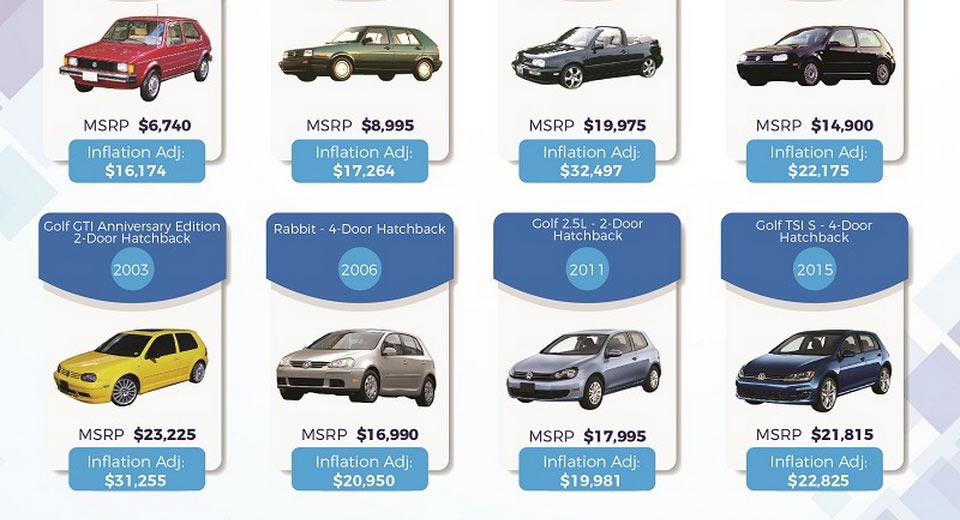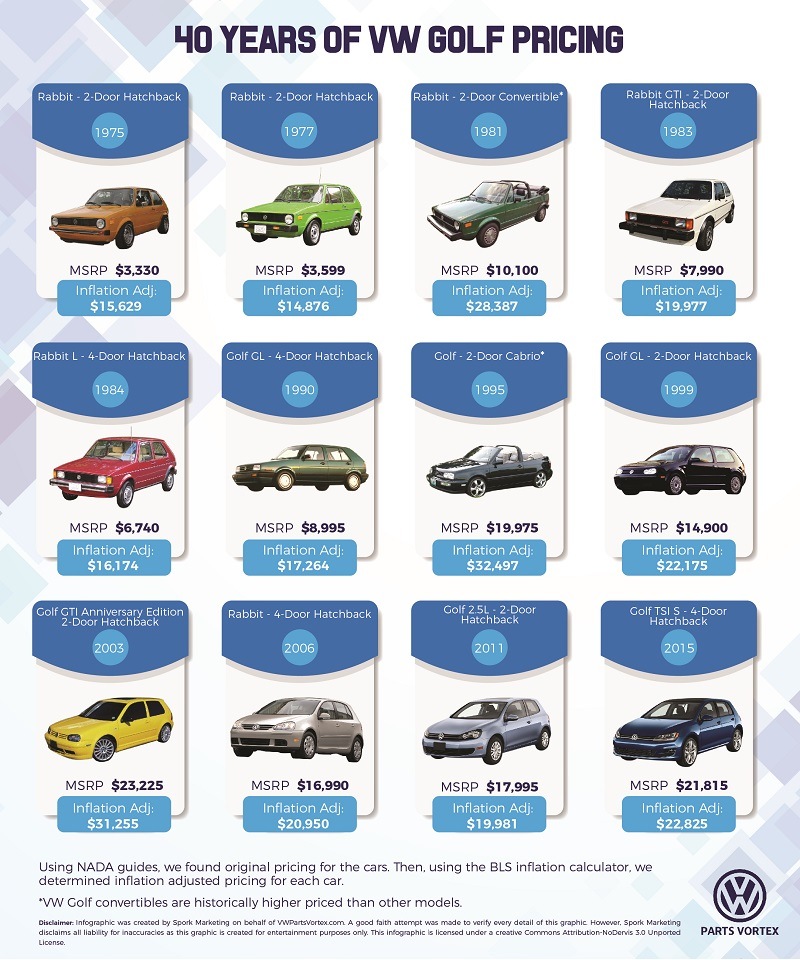Ever since the VW Rabbit (called Golf elsewhere) was introduced back in 1975, the car that was supposed to replace the Beetle in the U.S. underwent many generational shifts.
Despite all the changes, pricing has remained fairly consistent when adjusted for inflation – is what VWPartsVortex found while conducting this report.
“The Golf and Rabbit before it were always about three things,” says Rocco Demas, manager at VW Parts Vortex. “First, the cars have always been economical. Second, the cars have always been designed with an emphasis on premium features and quality.”
“Three, the cars have always been fun to drive. While they haven’t always been the least expensive car on the road, they’ve always been well regarded by consumers and critics alike.”
When the Rabbit first came out, it offered front-wheel drive, premium interior options and a 70 HP 1.8-liter 4-cylinder engine. Two years later, the diesel version popped up, costing buyers an extra $550 while returning 39.5 mpg (5.95 l/100km) on the highway, and 35 mpg (6.72 l/100km) in the city.
“The Rabbit was one of the nicest, most advanced compact cars you could buy in the 70s and 80s, with an awesome GTI option in the mid-80s that was a blast to drive,” added Demas. “Unlike most of the competitor’s cars, the Rabbit was consistently considered ‘fun to drive’ and high performing by critics. That continues to this day.”
The Rabbit name stuck all the way until the Golf Mk V was introduced back in 2006, and carried on until 2010 when VW reverted back to the Golf.
Now, if you take inflation into consideration, a 2017 VW Golf costs just $5,000 more than a base 1975 Rabbit, which isn’t that much when considering all the extra features found in today’s modern cars.




